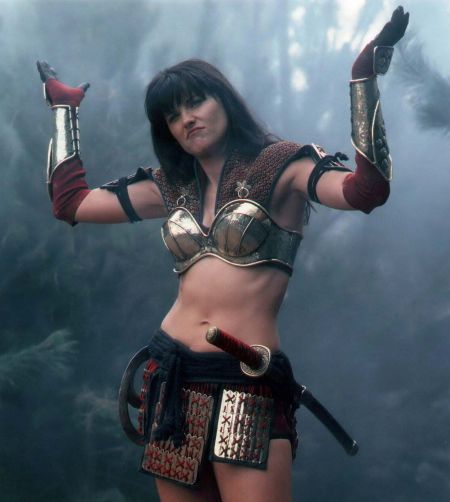 There were actually two queens of Halicarnassus called Artemisia. In the 4th century BC, one built a mausoleum to her husband, that was so beautiful that it became acknowledged as one of the Seven Wonders of the World, but she was the later, and at least for our purposes, the secondary holder of the name. Her predecessor’s time in the spotlight came during the Battle of Salamis, in the year 480 BC – the story of how she arrived there, leading a squadron of ships, would occupy the bulk of the movie, with the battle as the climax. Artemisia had married the King of Halicarnassus about twenty years earlier and when he died a few years later, took the throne for herself.
There were actually two queens of Halicarnassus called Artemisia. In the 4th century BC, one built a mausoleum to her husband, that was so beautiful that it became acknowledged as one of the Seven Wonders of the World, but she was the later, and at least for our purposes, the secondary holder of the name. Her predecessor’s time in the spotlight came during the Battle of Salamis, in the year 480 BC – the story of how she arrived there, leading a squadron of ships, would occupy the bulk of the movie, with the battle as the climax. Artemisia had married the King of Halicarnassus about twenty years earlier and when he died a few years later, took the throne for herself.
There is more speculation involved than historical fact, but since very little – not even the King’s name! – is known for sure, and nobody suggested making a documentary, we can be forgiven some dramatic license in the next couple of paragraphs. I think portraying him as an older man, who takes Artemisia as a young trophy wife, would be a credible assumption. I see him being sick for a time before death, so she runs the state in his name and makes a really good job of it. After he passes, Most of the nobles, all the people and even the Persian overloads are keen for her to continue, but nothing is ever that easy.
Every film needs a villain, so let’s have some evil characters in the background. Give the old King a son from a previous marriage; a real nasty type, with a beautiful (but even nastier!) wife. They expect to rule when the King dies, but make no attempt to help Artemisia in running the place – indeed, quite the opposite, they cause nothing but trouble. With little home support, the stepson gets some from a nearby enemy city. The two sides battle for control, Artemisia wins, and her rivals for power flee into exile. It is safe to assume that she didn’t get the throne without some kind of a fight, and if we include Persian assistance for our heroine, this would explain why she later supported their cause, in gratitude for their help.
Now back to historical fact. Halicarnassus was one of the Ionian Greek States on the West coast of what is now Turkey. It is known that Artemisia led her ships in action against other Greek city-states long before the main battle. There is nothing unusual in this as the Greek states often fought amongst themselves. She gained enough success to become a military advisor to King Xerxes of Persia, the world superpower of its day.
 The Persian Empire was a huge collection of diverse races united only in the tributes they paid to Xerxes. A select group of these subservient allies plus some of his own officials made up his military council. Artemisia was a member of the council and she alone spoke against taking on the Athenians in a naval battle. She advised him that the fleet would be better employed in supporting the army. Athens had already been occupied, and the whole of Greece lay open, but if the Persian fleet were decisively defeated, most of the army would have to withdraw as it could no longer be supplied from the sea. She wasn’t predicting disaster – but she wasn’t ruling it out either and considered it not worth the risk.
The Persian Empire was a huge collection of diverse races united only in the tributes they paid to Xerxes. A select group of these subservient allies plus some of his own officials made up his military council. Artemisia was a member of the council and she alone spoke against taking on the Athenians in a naval battle. She advised him that the fleet would be better employed in supporting the army. Athens had already been occupied, and the whole of Greece lay open, but if the Persian fleet were decisively defeated, most of the army would have to withdraw as it could no longer be supplied from the sea. She wasn’t predicting disaster – but she wasn’t ruling it out either and considered it not worth the risk.
This would make a very dramatic scene, and would also be historically accurate. Xerxes liked her and listened to what she had to say, but went ahead and tried to smash the Athenian fleet anyway. Over-confident to the point that he set up his golden throne to watch the battle, Xerxes was to be disappointed. Although heavily outnumbered, the Greeks out-thought, out-manoeuvred and then out-fought their foes, gaining in the process one of the most important and decisive naval victories of all time. The battle itself was of enormous importance and if the Greeks had lost, it is quite possible that their civilization as a separate entity would have been extinguished. In the past it has been impossible to do such battles justice, but in the era of CGI, it can be done.
Artemisia’s part in the battle is well documented, although there does seem to be some minor variations. I have tweaked my favourite version for the purposes of the movie version. She is in the thick of the battle and her ships have been holding their own. Elsewhere things are going badly for the Persians as the allied fleet, starts to disintegrates. Realising that the cause is lost and that it is now time to abandon her rearguard action and look to her own survival, Artemisia plans her escape. With a Greek trireme bearing down on her ship, and her escape route blocked by the confused melee of ships she increases speed and heads straight for them. If a collision was inevitable, it will be on her terms. She lines up the ship of her hated enemy, King Clamasithymus who, while nominally on the Persian side, was the one who aided her stepson and gave him refuge. At full speed she smashes into the King’s vessel, her trireme’s underwater ram punching a hole in it below the waterline. The trireme backs off and as its victim sinks, Artemisia notices with some satisfaction that her stepson is on board. Convinced that the Queen has changed sides, the Greeks let her withdraw her squadron from the battle.
 It has been recorded that Xerxes watched from the beach and when Artemisia rammed her rival exclaimed, “The men behaved like women, and the women like heroes.” It has been suggested that Xerxes was unaware of who she rammed, but I don’t buy this. Calling it a Persian fleet is done as a convenience, because describing it as a combined Phoenician, Egyptian, Cypriot, Cilician and Ionian-Greek fleet, is so cumbersome. Persia was a land empire and called on its allies and vassal states to provide ships. These were peoples who were natural rivals most of the time and would need little incentive to start fighting each other, especially as they try and escape the Greek trap. Artemisia only did what everyone else was trying to do – she just did it with style. The recognised facts support this view: after the battle, she remained on good terms with Xerxes while most of the fleet, and Xerxes himself, returned to their home countries
It has been recorded that Xerxes watched from the beach and when Artemisia rammed her rival exclaimed, “The men behaved like women, and the women like heroes.” It has been suggested that Xerxes was unaware of who she rammed, but I don’t buy this. Calling it a Persian fleet is done as a convenience, because describing it as a combined Phoenician, Egyptian, Cypriot, Cilician and Ionian-Greek fleet, is so cumbersome. Persia was a land empire and called on its allies and vassal states to provide ships. These were peoples who were natural rivals most of the time and would need little incentive to start fighting each other, especially as they try and escape the Greek trap. Artemisia only did what everyone else was trying to do – she just did it with style. The recognised facts support this view: after the battle, she remained on good terms with Xerxes while most of the fleet, and Xerxes himself, returned to their home countries
Meanwhile, back at the movies, how should the character of Artemisia be played? I see a beautiful lady who exudes an air of quiet dignity when required for ceremonial purposes, but is firm and decisive when decisions need to be made. In council she would command respect with her delivery of articulate intelligent argument. In battle she would be tough and ruthless, but fair and willing to give credit where it is due. The sort of commander men will follow into the jaws of hell. There may well be others that could do justice to the role, but if it was up to me, I would give it to Catherine Zeta-Jones.
Although it has been suggested, I’d prefer not to include a full-blown relationship between Xerxes and Artemisia. Xerxes was a man who would not have been short of mistresses, but would never dream of bringing one to a war council. It is quite possible that he liked the idea of putting Artemisia to the sword (so to speak!), leading to some unresolved sexual tension, but I much prefer the idea that she was there entirely on her own merits. Someone like John Rhys-Davies, might make a good Xerxes.
Since Artemisia was fighting on what is historically regarded as “the wrong side,” some time will have to be spent on her motivation. I think it reasonable that she believes that the Greeks and Persians should be united – she was after all a Greek living under Persian rule. At the end of the film, a narrator could mention that it was 150 years later that this happened, but not in the way that Artemisia expected. Oliver Stone notwithstanding, it took the genius of Alexander the Great to conquer both Persia and Greece, bringing them together at last.
Further reading: Herodotus on Artemisia





 “Up to bat…”
“Up to bat…”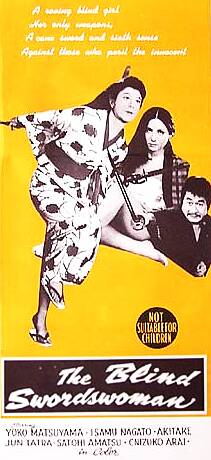 While the samurai is one of the most common archetypes in Japanese cinema, the female version is about as rare as the female gunslinger. Although none of these women reached anything like the popularity of Zatoichi – 26 films starring Shintaro Katsu alone, never mind the recent Takeshi Kitano version – there have been a few that have attempted to break the mould. Azumi and The Princess Blade have both achieved cult status in the West, assisted by Tarantino’s take in Kill Bill, Volume 1. Back in 1973, there was Lady Snowblood, which was successful enough to merit a sequel the following year, but so far, only one samurai-ess series has survived more than two outings.
While the samurai is one of the most common archetypes in Japanese cinema, the female version is about as rare as the female gunslinger. Although none of these women reached anything like the popularity of Zatoichi – 26 films starring Shintaro Katsu alone, never mind the recent Takeshi Kitano version – there have been a few that have attempted to break the mould. Azumi and The Princess Blade have both achieved cult status in the West, assisted by Tarantino’s take in Kill Bill, Volume 1. Back in 1973, there was Lady Snowblood, which was successful enough to merit a sequel the following year, but so far, only one samurai-ess series has survived more than two outings. We meet our heroine Oichi as a young child, who has just been being abandoned by her mother – not sure what happened to father, but we later discover Mom’s a prostitute, so can probably fill in the blanks ourselves. To make matters worse, the tree under which Oichi takes shelter from a storm is struck by lightning, rendering her totally blind, in a way that’s – probably wisely – left medically unexplained. However, she is then taken in by a kind gentleman, who brings her up, and on into adulthood.
We meet our heroine Oichi as a young child, who has just been being abandoned by her mother – not sure what happened to father, but we later discover Mom’s a prostitute, so can probably fill in the blanks ourselves. To make matters worse, the tree under which Oichi takes shelter from a storm is struck by lightning, rendering her totally blind, in a way that’s – probably wisely – left medically unexplained. However, she is then taken in by a kind gentleman, who brings her up, and on into adulthood.
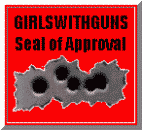 Later that same year (1969), Oichi was back in action, and at the start of Trapped, seems quite content with her life as a bounty-huntress. She has even adopted an orphan, just as she herself was taken in herself, but two things wreck this relatively happy situation. She discovers her protege is really a runaway, not an orphan, and consequently has to abandon her – again, as she was discarded. Worse yet, she incurs the wrath of fellow bounty-huntress Oen (Matsuoka), a kitten with a whip
Later that same year (1969), Oichi was back in action, and at the start of Trapped, seems quite content with her life as a bounty-huntress. She has even adopted an orphan, just as she herself was taken in herself, but two things wreck this relatively happy situation. She discovers her protege is really a runaway, not an orphan, and consequently has to abandon her – again, as she was discarded. Worse yet, she incurs the wrath of fellow bounty-huntress Oen (Matsuoka), a kitten with a whip 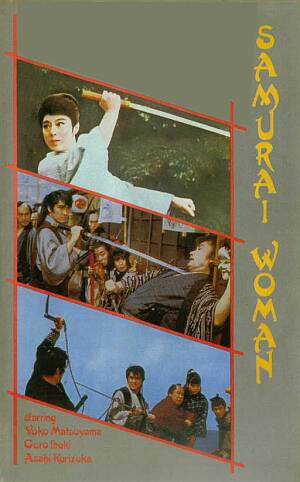 The third entry in the series saw a new director, and unfortunately, a marked turn for the worse, largely because the focus drifts off Oichi. It starts briskly enough, with the heroine coming into possession of a new, effective formula for gunpowder, something barely known at the time in Japan. Understandably, this makes her the focus of attention, in particular for a group with an interest in profiting from the discovery.
The third entry in the series saw a new director, and unfortunately, a marked turn for the worse, largely because the focus drifts off Oichi. It starts briskly enough, with the heroine coming into possession of a new, effective formula for gunpowder, something barely known at the time in Japan. Understandably, this makes her the focus of attention, in particular for a group with an interest in profiting from the discovery. Director Ichimura returned for the fourth episode, and despite similar problems as the third installment – most obviously, an apparent doubt that Oichi’s character can hold the viewer’s interest by herself – makes a much better stab at things here. Bounty-hunter Oichi finds out what life is like on the other side of the law, after she helps rescue an unwilling bride from a local magistrate; he slaps a 100 gold-piece reward on her head, which naturally, brings other bounty-hunters on her trail, led by Sankuro (Meguro).
Director Ichimura returned for the fourth episode, and despite similar problems as the third installment – most obviously, an apparent doubt that Oichi’s character can hold the viewer’s interest by herself – makes a much better stab at things here. Bounty-hunter Oichi finds out what life is like on the other side of the law, after she helps rescue an unwilling bride from a local magistrate; he slaps a 100 gold-piece reward on her head, which naturally, brings other bounty-hunters on her trail, led by Sankuro (Meguro).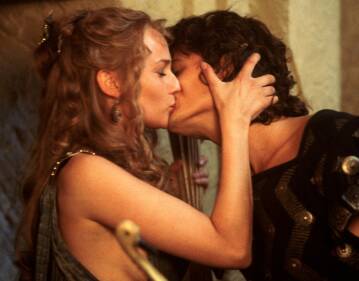 I have lost count of the number of movies in which I’ve been disappointed by the female characters. Often they seemed to be added as an afterthought, a “love interest” for the hero, or just as eye candy. In particular, there is a shortage of them in action movies: it’s strange that, so often, an all powerful crime boss is expected to live the life of a monk. But even when all the elements are put in place, there are many that then proceed to mess up the climax. At the other end of the scale, are films where the characters are completely wrong for the situation in which they are placed.
I have lost count of the number of movies in which I’ve been disappointed by the female characters. Often they seemed to be added as an afterthought, a “love interest” for the hero, or just as eye candy. In particular, there is a shortage of them in action movies: it’s strange that, so often, an all powerful crime boss is expected to live the life of a monk. But even when all the elements are put in place, there are many that then proceed to mess up the climax. At the other end of the scale, are films where the characters are completely wrong for the situation in which they are placed. Before getting on to the actions – or rather, the lack – of the female lead in this movie, I feel it only fair to say, she was not the main problem.
Before getting on to the actions – or rather, the lack – of the female lead in this movie, I feel it only fair to say, she was not the main problem. 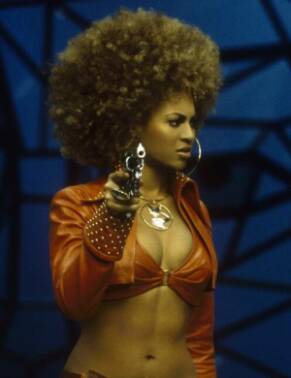 Austin Powers: Goldmember (2002)
Austin Powers: Goldmember (2002) First of all, they both would have grabbed guns before riding off – this makes more sense. They would have started firing at each other while riding, perhaps ending when Shane shoots out the bad girl’s back tire. Abandoning her bike, China is now able to aim more effectively and nearly takes out her pursuer. Sliding to a stop, the good girl ducks for cover, and resumes what is now a running gun battle. Shane chases her rival down and traps her. With nowhere to run, China prepares to make her last stand, when something almost unheard of in action movies happens: her gun runs out of ammo.
First of all, they both would have grabbed guns before riding off – this makes more sense. They would have started firing at each other while riding, perhaps ending when Shane shoots out the bad girl’s back tire. Abandoning her bike, China is now able to aim more effectively and nearly takes out her pursuer. Sliding to a stop, the good girl ducks for cover, and resumes what is now a running gun battle. Shane chases her rival down and traps her. With nowhere to run, China prepares to make her last stand, when something almost unheard of in action movies happens: her gun runs out of ammo.  At the welcome home reception, eyes meet across a crowded room, and it’s hate at first sight. Helen is being shunned by the women of Troy and knows she must deal with their leader. Unlike the others, Andromache does not turn from her gaze, but stares back defiantly. Slowly, menacingly. Helen moves towards the Trojan Princess. Hands on hips and eyes locked with those of her approaching nemesis, Andromache stands her ground – if the Spartan Queen is looking for a fight, she won’t need a map. It is Helen who speaks first. “How dare you treat me like this, Housewife of Hector. I demand the respect that I deserve.” “That is exactly what you are getting, Helen of Whores. You are not welcome here,” replies Andromache.
At the welcome home reception, eyes meet across a crowded room, and it’s hate at first sight. Helen is being shunned by the women of Troy and knows she must deal with their leader. Unlike the others, Andromache does not turn from her gaze, but stares back defiantly. Slowly, menacingly. Helen moves towards the Trojan Princess. Hands on hips and eyes locked with those of her approaching nemesis, Andromache stands her ground – if the Spartan Queen is looking for a fight, she won’t need a map. It is Helen who speaks first. “How dare you treat me like this, Housewife of Hector. I demand the respect that I deserve.” “That is exactly what you are getting, Helen of Whores. You are not welcome here,” replies Andromache.![Alotta whizzes past a fallen T-bird [Photo courtesy Wayne Kuban]](https://girlswithguns.org/pics/rd12.jpg) Okay, so here’s what REALLY happened. Sorry I took so long. As you can imagine, I’ve not had much time to sit at my desk lately. Also, this is a very long letter, but I promise, it contains tons of interesting information.
Okay, so here’s what REALLY happened. Sorry I took so long. As you can imagine, I’ve not had much time to sit at my desk lately. Also, this is a very long letter, but I promise, it contains tons of interesting information.
 Typical. Wait ages for one roller-derby league, then two start up almost after each other. Back in June, we wrote about AZ Roller Derby, but a schism arose almost immediately, disenchanted skaters breaking off into the Renegade Rollergirls. A third group also peeled off in another direction. The reasons are not relevant: here, we don’t take sides, especially if it increases our opportunities for femayhem. Regardless, almost-certainly-
Typical. Wait ages for one roller-derby league, then two start up almost after each other. Back in June, we wrote about AZ Roller Derby, but a schism arose almost immediately, disenchanted skaters breaking off into the Renegade Rollergirls. A third group also peeled off in another direction. The reasons are not relevant: here, we don’t take sides, especially if it increases our opportunities for femayhem. Regardless, almost-certainly-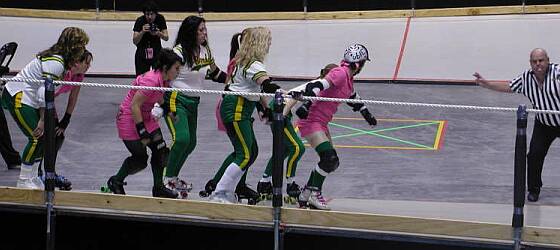 As we waited, promo videos played on the scoreboard, an enormous device hung from the ceiling like a cannon on the Death Star. Bonus points for production values on these films, which explained the rules and introduced the players, as well as promos for their sponsors: Dickies, the Platinum Girlz promotional company, etc. We learned they were calling the venue ‘The Shark Tank’, which is a catchy name, and that the rules were basically the same; the only major difference was there’d be four periods, each of ten 90-second jams, rather than three twenty-minute periods. On the downside, there was no program, and merchandise was limited to one design of T-shirt. One wonders perhaps how quickly this event had been scheduled.
As we waited, promo videos played on the scoreboard, an enormous device hung from the ceiling like a cannon on the Death Star. Bonus points for production values on these films, which explained the rules and introduced the players, as well as promos for their sponsors: Dickies, the Platinum Girlz promotional company, etc. We learned they were calling the venue ‘The Shark Tank’, which is a catchy name, and that the rules were basically the same; the only major difference was there’d be four periods, each of ten 90-second jams, rather than three twenty-minute periods. On the downside, there was no program, and merchandise was limited to one design of T-shirt. One wonders perhaps how quickly this event had been scheduled.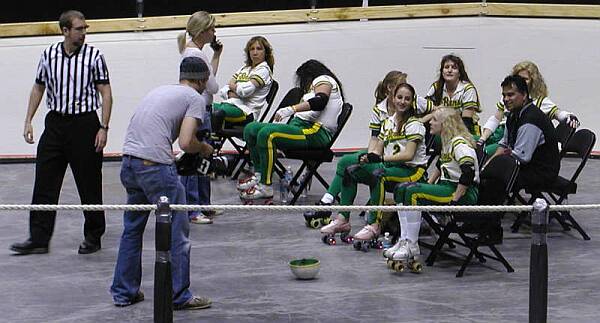
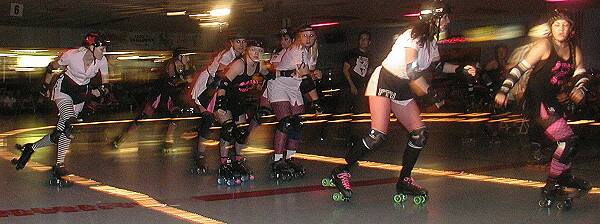 Roller Derby is quintessentially American; like the drive-in, it’s rarely seen outside the US. And also like the drive-in, it began in the 1930’s, when Chicago’s Leo Seltzer combined two crazes: roller-skating and the dance marathon. His contest for couples, over 57,000 laps (the distance between Los Angeles and New York). drew 20,000 spectators in its opening week. The power of the concept was proven, but it took a few years for it to evolve into a contact sport – Damon Runyon, author of Guys and Dolls, helped Seltzer incorporate these elements, and also the change in aim from distance to the scoring of points.
Roller Derby is quintessentially American; like the drive-in, it’s rarely seen outside the US. And also like the drive-in, it began in the 1930’s, when Chicago’s Leo Seltzer combined two crazes: roller-skating and the dance marathon. His contest for couples, over 57,000 laps (the distance between Los Angeles and New York). drew 20,000 spectators in its opening week. The power of the concept was proven, but it took a few years for it to evolve into a contact sport – Damon Runyon, author of Guys and Dolls, helped Seltzer incorporate these elements, and also the change in aim from distance to the scoring of points.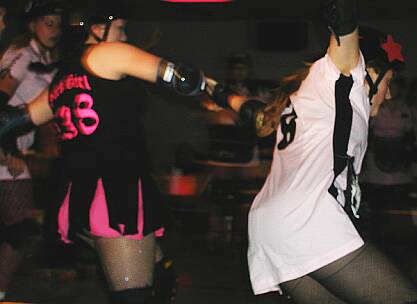 The golden era of the sport began in the 1950’s, when television helped roller derby become popular in almost every state. However, the 1970’s saw it go into decline, and it has never recovered, despite attempts to revive it. Most recently, there was RollerJam, an exercise closer to professional wrestling and co-funded by TNN, that stumbled along despite the assistance of Leo Seltzer’s son, Jerry, and finally went under in June 2000.
The golden era of the sport began in the 1950’s, when television helped roller derby become popular in almost every state. However, the 1970’s saw it go into decline, and it has never recovered, despite attempts to revive it. Most recently, there was RollerJam, an exercise closer to professional wrestling and co-funded by TNN, that stumbled along despite the assistance of Leo Seltzer’s son, Jerry, and finally went under in June 2000.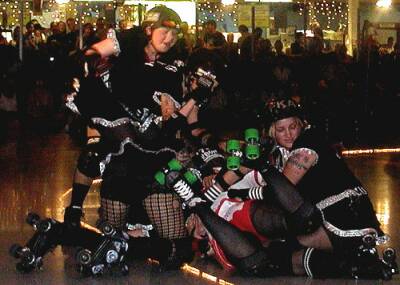 After getting through, the jammers then lap the pack, and again approach it from behind. Only this time, they score one point for every opponent they pass. Which is where the fun starts, since the opposition is trying to block them, and their team-mates are trying to block the blockers, while also stopping the opposition’s jammer from passing them and scoring. A match consists of two periods, each lasting twenty minutes; most points wins.
After getting through, the jammers then lap the pack, and again approach it from behind. Only this time, they score one point for every opponent they pass. Which is where the fun starts, since the opposition is trying to block them, and their team-mates are trying to block the blockers, while also stopping the opposition’s jammer from passing them and scoring. A match consists of two periods, each lasting twenty minutes; most points wins. I was a little surprised to see a flat track, it was simply marked out on the surface of the rink with rope lights; the teams are working towards banking, and have weekly fundraisers at Ziggy’s in Tempe – including a spanking booth! For the moment, they make do and, regardless, the pace was fast and furious; while the skating ability on view was variable, these women are athletes, make no mistake about it. The best jammers, such as Sara Veza and Go Go Liz, slid through the pack like a knife through butter. Even rookies like ourselves could see the skill required, while perhaps not appreciating the subtle refinements of the sport. [Alright, “subtle” is stretching it. There’s a whole page on their website, with photos of the injuries players have received…]
I was a little surprised to see a flat track, it was simply marked out on the surface of the rink with rope lights; the teams are working towards banking, and have weekly fundraisers at Ziggy’s in Tempe – including a spanking booth! For the moment, they make do and, regardless, the pace was fast and furious; while the skating ability on view was variable, these women are athletes, make no mistake about it. The best jammers, such as Sara Veza and Go Go Liz, slid through the pack like a knife through butter. Even rookies like ourselves could see the skill required, while perhaps not appreciating the subtle refinements of the sport. [Alright, “subtle” is stretching it. There’s a whole page on their website, with photos of the injuries players have received…]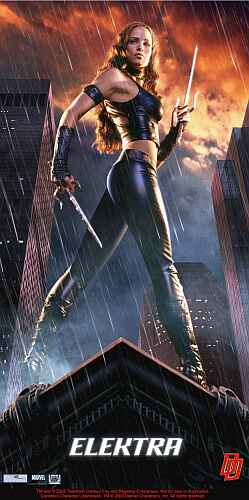 While 2003 has been touted as the Year of the Comic-book Movie, those centred around heroines have been notable by their absence. Sure, X-Men 2, League of Extraordinary Gentlemen and Daredevil have then in supporting roles, but going by the example of the last-named, anyone expecting much is likely to be sorely disappointed. Elektra, one of the toughest, deepest, most twisted characters in comics history – at least in the Bill Sienkiewicz/Frank Miller incarnation – was reduced to little more than a simplistic sidebar of little relevance. Credit to Jennifer Garner for doing what she could, but it’s safe to say that we’re not awaiting the touted Elektra spinoff with anything more than a “that’s nice” level of anticipation.
While 2003 has been touted as the Year of the Comic-book Movie, those centred around heroines have been notable by their absence. Sure, X-Men 2, League of Extraordinary Gentlemen and Daredevil have then in supporting roles, but going by the example of the last-named, anyone expecting much is likely to be sorely disappointed. Elektra, one of the toughest, deepest, most twisted characters in comics history – at least in the Bill Sienkiewicz/Frank Miller incarnation – was reduced to little more than a simplistic sidebar of little relevance. Credit to Jennifer Garner for doing what she could, but it’s safe to say that we’re not awaiting the touted Elektra spinoff with anything more than a “that’s nice” level of anticipation. I usually start watching this in a sense of disbelief, since it’s certainly not the most immediately convincing of movies. However, there’s a point near the middle which has in quick succession an amazing action sequence and two revelations, one touching, one tragic, and I realise that I am, yet again, utterly buying into the characters, storyline and setting. Disbelief simply ceases to be an option, and by the end, I know why this is among my all-time favourites, not just in the action heroine genre, but among all cinema.
I usually start watching this in a sense of disbelief, since it’s certainly not the most immediately convincing of movies. However, there’s a point near the middle which has in quick succession an amazing action sequence and two revelations, one touching, one tragic, and I realise that I am, yet again, utterly buying into the characters, storyline and setting. Disbelief simply ceases to be an option, and by the end, I know why this is among my all-time favourites, not just in the action heroine genre, but among all cinema.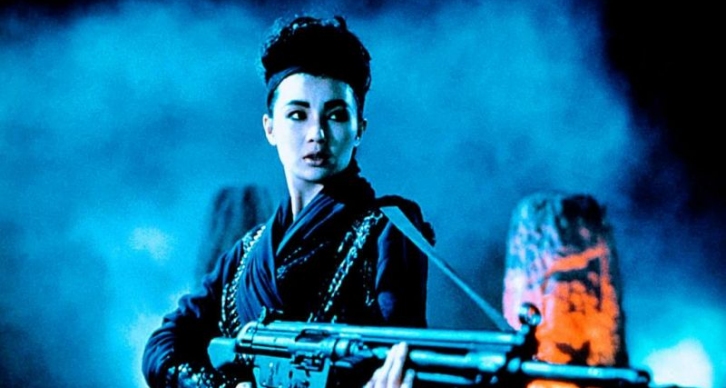

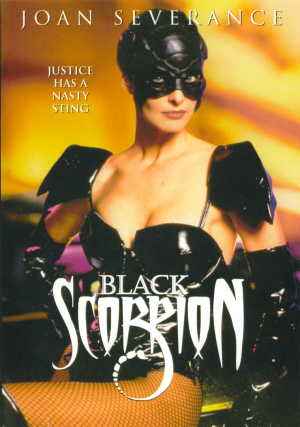 Roger Corman is a man without shame – and that’s in no way intended as an insult. He simply utilises any resource to the best of its ability, as is shown by the
Roger Corman is a man without shame – and that’s in no way intended as an insult. He simply utilises any resource to the best of its ability, as is shown by the 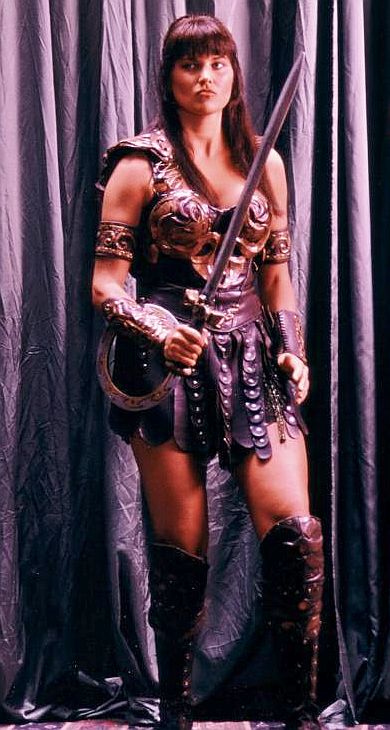
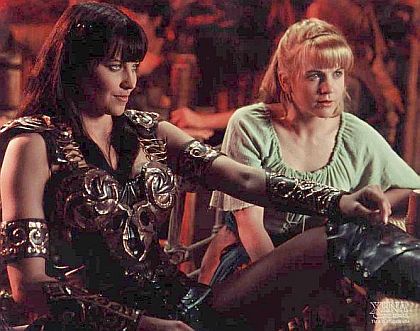 There was enormous, often ferocious debate among fandom over the nature of Xena and Gabrielle’s relationship, some asserting they were a lesbian couple. While both showed plenty of evidence of heterosexuality, there was a lot of content open to interpretation – much of it absolutely deliberate, and known as “subtext” in Xena fandom. I never found it convincing. My issue with it was not one of sexuality, simply compatibility: Xena and Gabrielle were absolute opposites, in background, upbringing, personality and approach. They just didn’t “fit” each other, from what I could see, and there was no chemistry visible. Xena and Hercules: I could see that. Xena and the Queen of the Amazons: no problem there either. But Xena and Gabrielle? Sorry. Not buying this. It also played into the stereotype that any strong woman
There was enormous, often ferocious debate among fandom over the nature of Xena and Gabrielle’s relationship, some asserting they were a lesbian couple. While both showed plenty of evidence of heterosexuality, there was a lot of content open to interpretation – much of it absolutely deliberate, and known as “subtext” in Xena fandom. I never found it convincing. My issue with it was not one of sexuality, simply compatibility: Xena and Gabrielle were absolute opposites, in background, upbringing, personality and approach. They just didn’t “fit” each other, from what I could see, and there was no chemistry visible. Xena and Hercules: I could see that. Xena and the Queen of the Amazons: no problem there either. But Xena and Gabrielle? Sorry. Not buying this. It also played into the stereotype that any strong woman 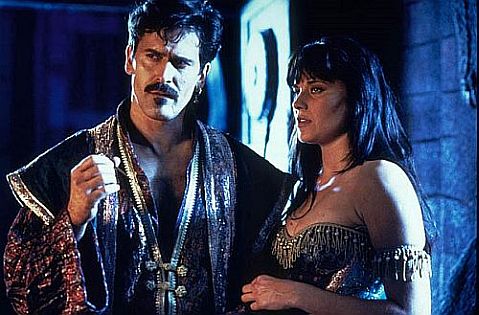 It’s assumed viewers are at least somewhat familiar with Xena’s background, as she is first seen burying her armour in an effort to bury her past. Of course, this is about as successful as it usually is in fiction, and it’s not long before she’s saving villagers, including Gabrielle, from slavery. That includes an aerial battle atop platforms, which is the first sign of the show’s strong influence from Hong Kong action films; it was using wirework, in a way that predated its popular arrival in Hollywood. Similarly, the stunning New Zealand locations foreshadow Lord of the Rings, to the extent that I kept expecting to see hobbits gamboling along in Xena’s wake.
It’s assumed viewers are at least somewhat familiar with Xena’s background, as she is first seen burying her armour in an effort to bury her past. Of course, this is about as successful as it usually is in fiction, and it’s not long before she’s saving villagers, including Gabrielle, from slavery. That includes an aerial battle atop platforms, which is the first sign of the show’s strong influence from Hong Kong action films; it was using wirework, in a way that predated its popular arrival in Hollywood. Similarly, the stunning New Zealand locations foreshadow Lord of the Rings, to the extent that I kept expecting to see hobbits gamboling along in Xena’s wake.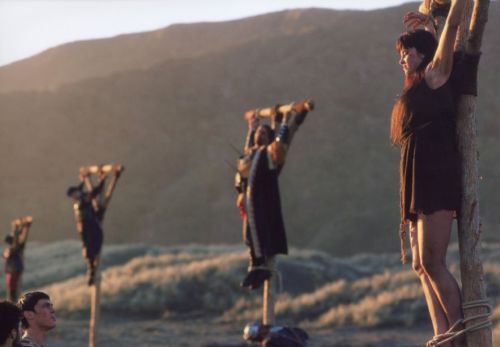 The defining moment of Xena’s sophomore season didn’t take place in any episode. In fact, it didn’t even take place in New Zealand, but thousands of miles away, During a rehearsal for an appearance on The Tonight show with Jay Leno, Lucy Lawless was thrown off a horse after it lost its footing, and broke her pelvis. It’s interesting to compare the reaction of the producers to what the Tapert/Raimi team did when the star of Spartacus, Andy Whitfield, was similarly a victim of severe misfortune, more than a decade later. There, they put the show entirely on hold and opted instead to film a prequel without him.
The defining moment of Xena’s sophomore season didn’t take place in any episode. In fact, it didn’t even take place in New Zealand, but thousands of miles away, During a rehearsal for an appearance on The Tonight show with Jay Leno, Lucy Lawless was thrown off a horse after it lost its footing, and broke her pelvis. It’s interesting to compare the reaction of the producers to what the Tapert/Raimi team did when the star of Spartacus, Andy Whitfield, was similarly a victim of severe misfortune, more than a decade later. There, they put the show entirely on hold and opted instead to film a prequel without him. In terms of style and approach, the show covers even more ground here than the first time, from absolutely froth to grim darkness. Xena even gets crucified by Julius Caesar in one episode [confusingly, the actor responsible also crops up later, playing Cupid, complete with fluffy wings…]. I’m sure I’m not the only one who found themselves whistling Always Look on the Bright Side of Life, during the scene shown above right. Another unwitting Python reference is the wretched Here She Comss, Miss Amphipolis, a dreadful tale of drag-queen empowerment, featuring perhaps the least convincing female impersonator since John Cleese put on a dress – as on the left, watch that Adam’s apple
In terms of style and approach, the show covers even more ground here than the first time, from absolutely froth to grim darkness. Xena even gets crucified by Julius Caesar in one episode [confusingly, the actor responsible also crops up later, playing Cupid, complete with fluffy wings…]. I’m sure I’m not the only one who found themselves whistling Always Look on the Bright Side of Life, during the scene shown above right. Another unwitting Python reference is the wretched Here She Comss, Miss Amphipolis, a dreadful tale of drag-queen empowerment, featuring perhaps the least convincing female impersonator since John Cleese put on a dress – as on the left, watch that Adam’s apple  I used to be a Xena fan; for the first couple of series, I was a die-hard, never missed an episode, bought the merchandise, went to the gatherings, etc. I loved (with one exception) the supporting cast – Joxer, Ares, Autolycus – and still reckon Callisto remains one of the great TV villainesses of all time.
I used to be a Xena fan; for the first couple of series, I was a die-hard, never missed an episode, bought the merchandise, went to the gatherings, etc. I loved (with one exception) the supporting cast – Joxer, Ares, Autolycus – and still reckon Callisto remains one of the great TV villainesses of all time.